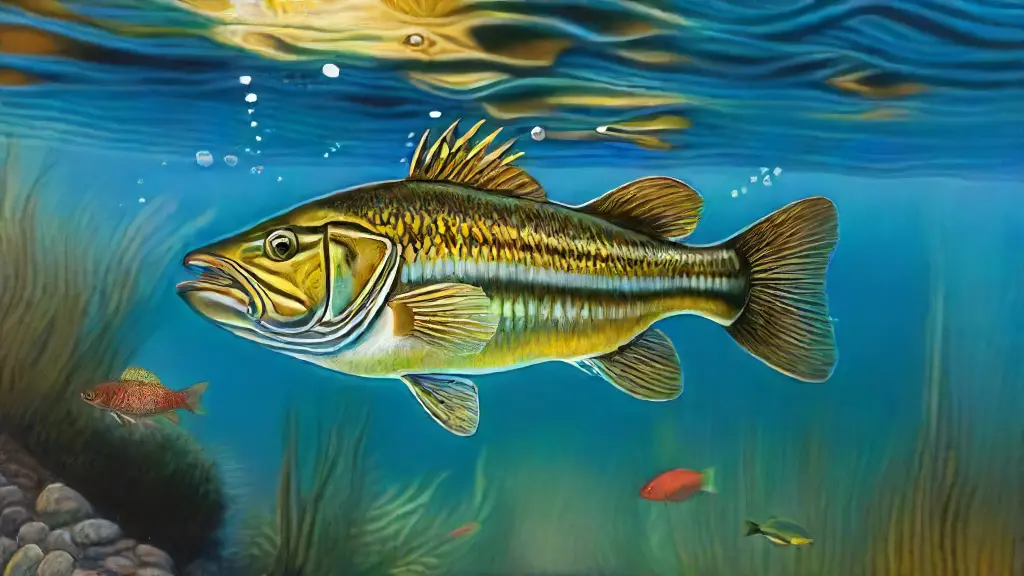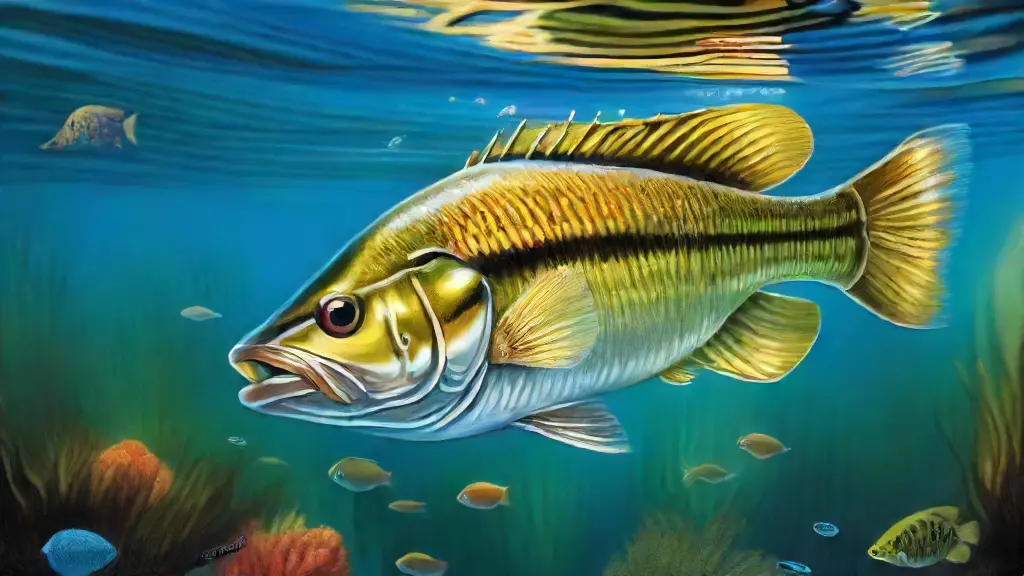How to Use Deep Diving Crankbaits for Smallmouth Bass

Mastering the Art of Deeper Smallmouth Bass Fishing Effective freshwater fishing relies heavily on a deep understanding of the techniques and strategies best suited for the specific water bodies being targeted. In the pursuit of smallmouth bass, this understanding is crucial for success, particularly in deeper waters.
Crankbaits have carved out a reputation as a reliable tool for targeting these fish, and when used correctly, can be a game-changer in many fishing scenarios.
Key factors to consider when targeting smallmouth bass in deeper waters include the structure of the water, such as drop-offs, ledges, and weed beds.
The depth and water movement play a crucial role in attracting bass to these areas. When using deep diving crankbaits, it’s essential to present them to smallmouth bass in the right water conditions, such as lakes, rivers, and reservoirs, amidst the right structure, like drop offs, ledges, and weed beds.
Deep diving smallmouth bass
The allure of smallmouth bass fishing lies in its subtle nuances, where the slightest adjustments in presentation can mean the difference between a missed strike and a hard-fought victory. Rocky bottoms, steep drop-offs, and submerged structure all play a crucial role in shaping the underwater landscape, but it’s the way these features interact with water currents and temperature gradients that creates the perfect hiding spots for these feisty fighters.
The key to successful deep diving for smallmouth bass lies in mastering the art of slow-motion crankbait retrieval.
This requires a delicate balance of speed and accuracy to present the lure in a way that mimics the subtle vibration and rattling of a wounded baitfish, enticing the fish to strike with precision and power. Look for areas with rocky bottoms, underwater structure, and natural cover, where you can hide and set up your ambush to efficiently lure, retrieve, and present your rig with the right speed, depth, accuracy, and vibration to ensure a rattling strike.

Understanding lure vibration
When you’re out on the water trying to reel in the big ones, understanding how to use vibration to your advantage can make all the difference. Effective fishing strategies often rely on a combination of factors, including the right tackle, presentation, and bait.
When it comes to attracting Smallmouth Bass, timing is everything.
A well-placed crankbait retrieve can mean the difference between a blank slate and a lunker-filled bucket.
The science behind lure vibration is rooted in the way fish perceive movement and sound. A crankbait that wobbles, hops, and thumps can mimic the movement of a baitfish or injured prey, triggering a feeding response in predators.
One key factor to consider is line size, as a heavier line can help to amplify the vibration of the lure. To tune your crankbait for optimal movement, start by considering the treble hooks, line size, leader, sinkers, floaters, bait, scent, attractants, and the type of fishing you’re doing, whether it’s bottom bouncing, suspended, vertical, or horizontal.
Fishing
- Timing is crucial when attracting Smallmouth Bass, as a well-placed crankbait retrieve can make a significant difference.
- A crankbait that wobbles, hops, and thumps can mimic the movement of a baitfish or injured prey, triggering a feeding response in predators.
- A heavier line can help to amplify the vibration of the lure, making it more effective for attracting fish.
- When tuning a crankbait for optimal movement, consider factors such as treble hooks, line size, leader, sinkers, floaters, bait, scent, attractants, and fishing type.
Fishing structure depths
As the sun rises over the water’s surface, seasoned anglers know that the key to landing a trophy catch lies in mastering the subtle nuances of fishing structure depths.
Topwater and Subsurface Interactions
Target areas where structure changes depth, such as humps, ridges, and ledges, which create pockets of increased activity due to their slow cadence.
These intersections often make steady presentations more effective, allowing you to adjust your casting rhythm to draw in biting fish.
Dropped Offs and Tops
Noticeable changes in depth and structure can concentrate fish populations, making dropped offs and tops hotspots for catching species like bass and walleye. Key indicators of these areas include changes in vegetation, bottom composition, and the jagged, twitch-like movement of a lure as it casts out, then retrieves with a steady rhythm, punctuated by the occasional pause, its jerky cadence revealing the subtle timing and distance at which a fish holds.
Why use crankbaits
For many smallmouth bass anglers, the thrill of reeling in a monster catch lies in the precision and customization of their lure presentation. Crankbait fishing is a potent strategy for smallmouth bass enthusiasts, as it allows for precise control and customization of lure presentation.
According to experts, a well-executed crankbait presentation relies heavily on the ability to accurately gauge water depth and structure using GPS mapping techniques, which aid in this process, ensuring a strategic approach to cover more ground.
With a fish finder or GPS mapping device, anglers can identify areas with a high concentration of baitfish, increasing the likelihood of encountering active smallmouth bass.
By planning around these hotspots, anglers can develop a winning strategy. Techniques like dragging and stopping the crankbait can increase the effectiveness of the retrieval, while experimenting with different lifts.
Facts About Crankbait Fishing
- Crankbait fishing allows for precise control and customization of lure presentation.
- A well-executed crankbait presentation relies heavily on accurately gauging water depth and structure using GPS mapping techniques.
- Fish finders or GPS mapping devices can identify areas with a high concentration of baitfish, increasing the likelihood of encountering active smallmouth bass.
- Techniques like dragging and stopping the crankbait can increase the effectiveness of the retrieval, while experimenting with different lifts.
Lure selection for bass
Bass fishing is an exhilarating experience that requires finesse, patience, and the right tools for the job. In the world of bass fishing, a well-chosen lure can be the difference between a day of catching nothing but open water and a day filled with exciting battles.
When it comes to luring these finicky creatures, choosing the right lure is crucial, and the wrong selection can lead to a day of strike-less casting.
Flashes of light on a treble hook can entice a striped bass, while a soft, tapering skirt can slow down the fall of a weighted lure, making it more appealing to a lazy largemouth. The body shape of a lure can also play a significant role, with a more streamlined design suiting fast-moving waters and a bulkier design better suited for slower-moving rivers and allowing for a more effective presentation of the other attracting features such as flashers, blades, skirts, wraps, trailers, tails, fins, size, color, pattern, texture, and weight.
Choosing fishing techniques
As you prepare for a day on the water, you’re probably thinking about the type of fish you’re after and the right tackle to catch them. But before you even cast your line, it’s essential to consider the factors that influence lure movement and action, such as contour and boat control.
Successful lure presentation hinges on a deep understanding of these factors, including the type of lure used, as well as the speed at which it’s introduced to the water.
By taking these factors into account, anglers can tailor their presentation to meet the specific needs of their target species.
One key consideration when selecting the right lure is the type of structure you’re fishing around. For instance, deep diving crankbaits are ideal for targeting structure like rocks and drop-offs, while other lures may be better suited for fishing open water with a gentle trolling motor.
Factors Influencing Lure Movement and Action
- Contour plays a significant role in lure movement and action, as it affects the way lures move and behave in the water.
- Boat control is crucial in controlling the speed and movement of the lure, allowing anglers to tailor their presentation to meet the specific needs of their target species.
- The type of lure used is also a critical factor in lure movement and action, with different lures designed for specific fishing techniques and target species.
- Speed is another important factor, as it affects the way lures move and behave in the water, and can be adjusted to suit the specific needs of the target species.
Drop off ambush tactics
As I explored the serene lake, I discovered that the perfect blend of water temperature, oxygen, and aquatic life creates an intricate web of predator and prey relationships, which led me to unlock the secrets of smallmouth bass behavior.
Understanding Smallmouth Behavior
Smallmouths are a curious species, known to be nocturnal feeders, preying on unsuspecting prey under the cover of darkness.
This unique behavior allows them to thrive in their habitat, taking advantage of the limited aquatic life available.
Unorthodox Crankbait Presentation
To successfully employ drop-off ambush tactics, it’s essential to understand the importance of speed and deception. A fast-paced crank with the right trailer options can deceive even the most vigilant bass, as they rely on their acute senses to detect submerged structures and dissolved gases in water.
Effective retrieval strategies
As sunset approaches, the calm waters of the lake take on a serene quality, with the soft whispers of reeds and water lilies swaying gently in the breeze. are crucial for anglers seeking to land feisty smallmouth bass during this prime time.
Retrieve speed and cadence are critical components of an effective retrieval strategy.
Too fast, and the crankbait may slide past the bass undetected; too slow, and it may sink too quickly, losing its appeal.
By mastering the art of adjusting retrieve timing to match changing water conditions, anglers can increase their chances of hooked smallmouth bass. The wispy tendrils of emergent plants sway in the current, providing a subtle ambush point for the unsuspecting bass. Meanwhile, the aquatic weeds beneath the surface hide a multitude of crayfish and other crustaceans, waiting to be discovered.
| Retrieve Speed | Retrieve Cadence | Water Conditions | Smallmouth Bass Hookup |
|---|---|---|---|
| Too Fast | May slide past bass undetected | Changing water conditions | Decreased chances |
| Too Slow | May sink too quickly | Emergent plants | Decreased chances |
| Adjusting Timing | Mastering art of retrieval | Subtle ambush points | Increased chances |
Best Rods for Fishing Crankbaits for Smallmouth Bass
Best Crankbait Colors for Smallmouth Bass


